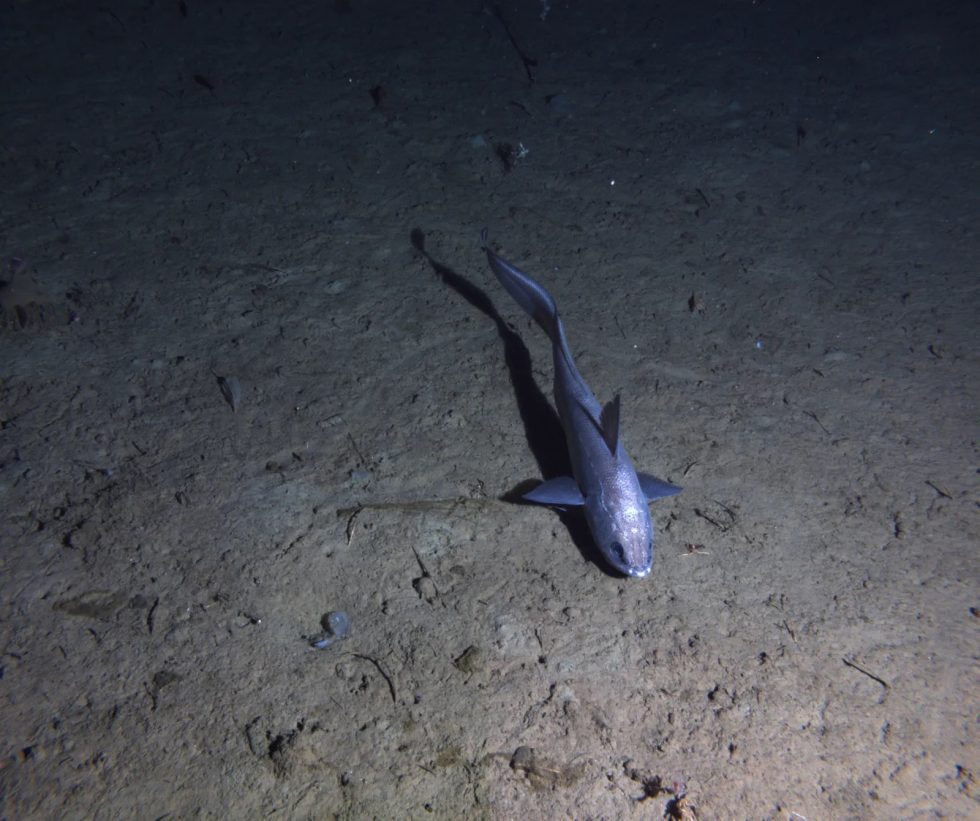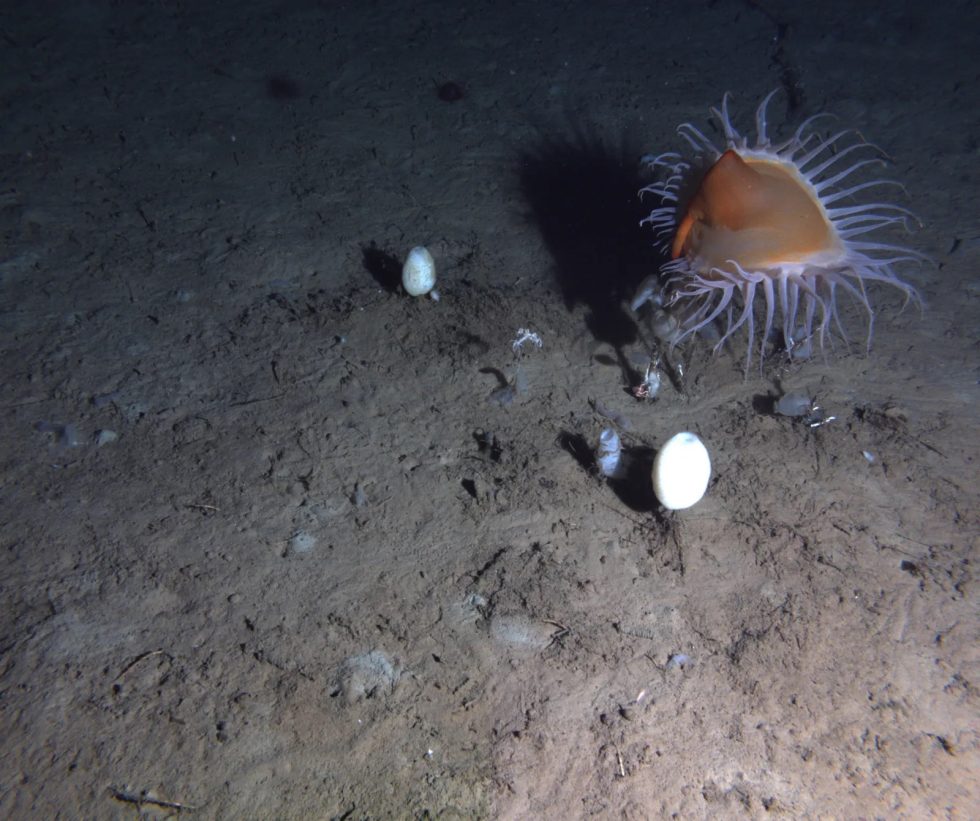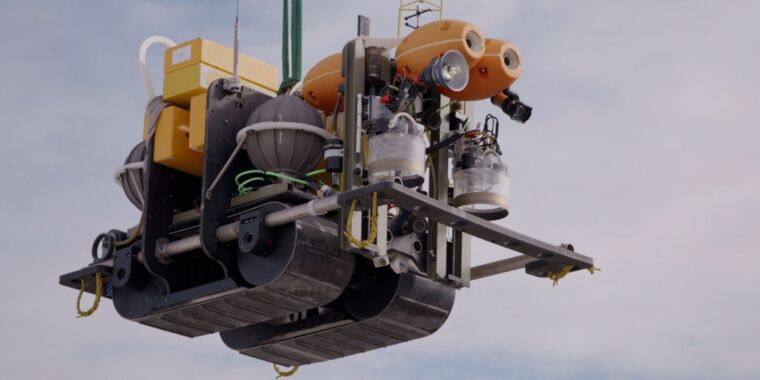
Madison Pobis | MBARI
The Benthic Rover II is the size of a compact car, although it rocks fat treads, making it more like a scientific tank. That, along with the two googly-eye-like flotation devices on its front, gives it a sort of WALL-E vibe. Only instead of exploring a garbage-strewn landscape, BR-II roams the Pacific seafloor, 13,000 feet deep. The robot’s mission: to prowl the squishy terrain in search of clues about how the deep ocean processes carbon.
That mission begins with a wild ride, 180 miles off the coast of Southern California. Scientists at the Monterey Bay Aquarium Research Institute lower BR-II into the water and then … drop it. Completely untethered, the robot free-falls for two and a half hours, landing on the abyssal plains—great stretches of what you might generously call muck. “It’s mushy and dusty at the same time,” says MBARI electrical engineer Alana Sherman, coauthor on a new paper in Science Robotics describing findings from the robot’s adventures. “Which is part of the reason it’s a tracked vehicle, and it has these really wide treads.” That extra surface area distributes the robot’s weight so it doesn’t sink into the sand.

If you wanted to devise the perfect way to torture a robot, the deep sea would be it. At these depths the water is cold, salty (and therefore corrosive), and highly pressurized; there’s a whole lot of liquid pushing down on the robot.
Like the Mars rovers, this robot must be autonomous. In fact, in some ways it’s even more difficult to keep tabs on a rover 13,000-feet deep than it is a rover on another planet. Radio waves travel well in space, it’s just that they take up to 20 minutes each way to make the trip between Earth and Mars—and good luck remotely piloting a rover in real time with that kind of delay. But radio waves hate water. So, instead, BR-II uses acoustic signals to talk to another robot, a floating glider that MBARI scientists release from shore four times a year. The glider, essentially a very expensive surfboard, travels to the rover’s approximate location, pings it, collects status updates and sample data, and fires that information to a satellite for the researchers to access.

MBARI

MBARI
The rover sits in one place like this for 48 hours, then moves forward 33 feet. That’s all. “It would not know if it drove off a cliff—all it knows is I’m supposed to drive forward 10 meters,” says Sherman. “But luckily, there are no cliffs around, so we take advantage of the simplicity of the environment to keep the robot more simple.”
Still, there’s a problem: the oversized treads make a mess of the seafloor. “Even though it is moving very slowly, it doesn’t take much to create this huge dust storm,” says Sherman. “We always want to be driving into the current so that it can push the sediment that is disturbed behind us.” So before the rover moves, it uses a sensor to get an idea of the current direction of the … er, current, then heads straight for it.
The benthic rover does this for a whole year, unsupervised: park, take measurements, move 33 feet, repeat. Then the scientists steam out in their research boat to give it a battery change.








